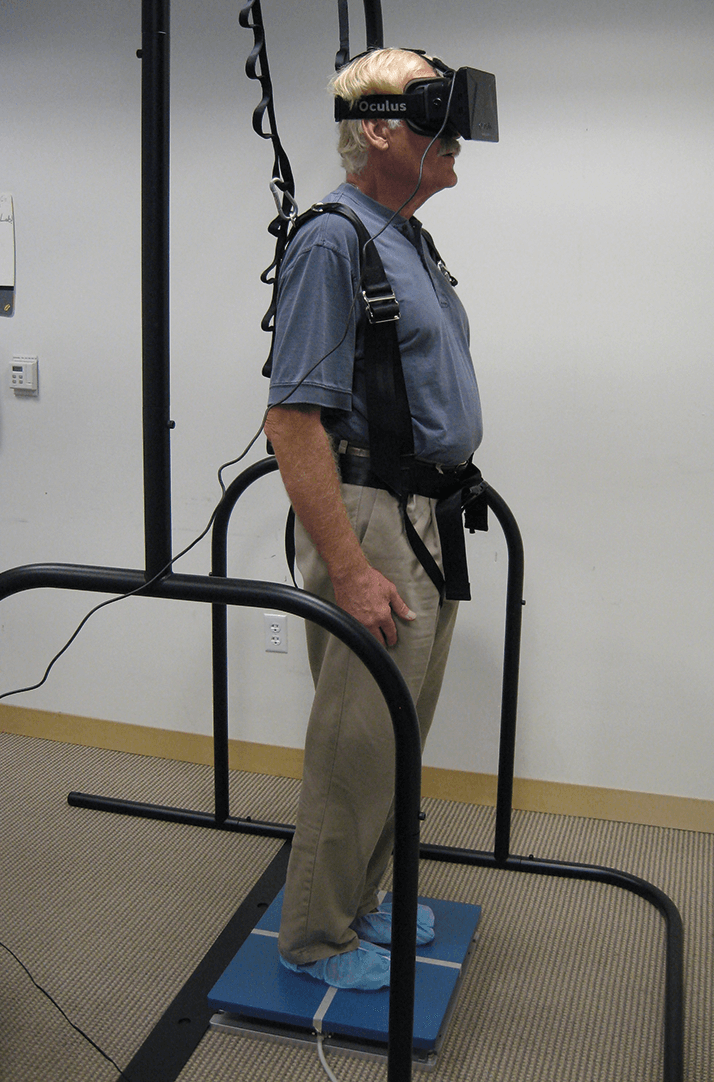
Falls are the leading cause of injury-related death and morbidity in older adults (1) – and something that’s more common in people with chronic eye diseases like glaucoma. People with glaucoma are three times more likely to fall than their healthy counterparts (2). Why? The loss of retinal ganglion cells in glaucoma affects peripheral vision, which plays an important role in postural control. Despite this, visual field loss as measured by standard automated perimetry is not strongly correlated with an individual’s risk of falls (3).
We’ve previously covered the ways virtual reality (VR) headsets are set to change many aspects of ophthalmology, and the author, Carl Glittenberg pointed to how these consumer-priced VR headsets could revolutionize eye tests (4). He’s not the only one to have had that idea – and now a team from the University of California, San Diego have published their way of assessing how glaucoma affects postural control: subjecting patients to balance tests with a force platform and realistic VR environments using an Oculus Rift headset (above, right). The headset displays spinning images and simulated environments (such as tunnels) through which the patient appears to move. They found that study participants with glaucoma made more movements than glaucoma-free control subjects, when attempting to correct their balance, and furthermore, the degree to which they lost their balance was linked to their history of previous falls. This study was performed because the researchers did not believe that traditional balance testing accurately mimics the conditions people encounter in everyday situations – and were determined to design something better. With a bit more work and further validation, they claim that VR methods of measuring balance could be used to reliably identify patients at high risk of falling, and potentially enable physicians to intervene and address the issue before such patients suffer injury.
References
- JL O’Loughlin, et al., “Incidence of and risk factors for falls and injurious falls among the community- dwelling elderly”, Am J Epidemiol, 137, 352–354 (1993). SA Haymes, et al., “Risk of falls and motor vehicle collisions in glaucoma”, Invest Ophthalmol Vis Sci, 48, 1149–1155 (2007). PMID: 17325158. A Diniz-Filho, et al., “Evaluation of postural control in patients with glaucoma using a virtual reality environment”, Ophthalmology, [Epub ahead of print] (2015). PMID: 25892017. C Glittenberg, “A Fantastic Voyage – Into Your Patients’ Eyes”, The Ophthalmologist, 15, 18–27 (2015). http://bit.ly/glittenbergTOP.
